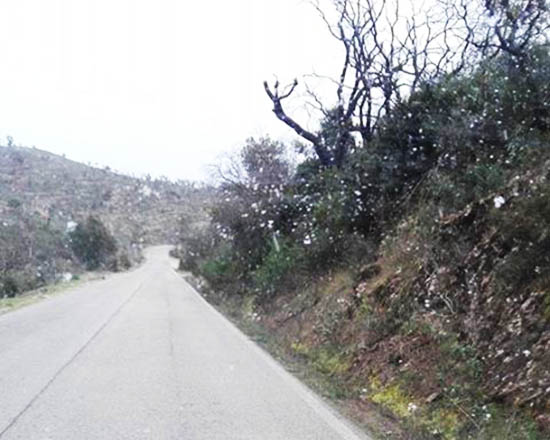 Winter 2016/2017 brought snow to the Eastern Algarve but, according to the Portuguese Institute of the Sea and Atmosphere (IPMA), «it was classified as normal in relation to temperature and dry in terms of rainfall», in mainland Portugal.
Winter 2016/2017 brought snow to the Eastern Algarve but, according to the Portuguese Institute of the Sea and Atmosphere (IPMA), «it was classified as normal in relation to temperature and dry in terms of rainfall», in mainland Portugal.
The average temperature in the quarter, from December to February, was 9,91°C, +0.30°C higher than normal. The mean value of the maximum temperature, 14,86°C, was also “higher than the normal value, with an anomaly of +1,06°C”. This was even the fourth highest figure since 1931, according to the IPMA.
The mean value of the minimum air temperature, 4,95°C, was lower than the normal value, with an anomaly of -0,48°C.
In relation to the average value of the amount of precipitation, of 242.5 mm, in the December-February quarter, IPMA says that “it was lower than the average value, corresponding to 69% of the normal value”.
Among the highlights of winter 2016/2017, IPMA highlights the fact that there was «snowfall in every month of the quarter» and recalls January 19, «with reports of light snowfall in the Eastern Algarve (S. Brás de Alportel and Serra do Caldeirão)».
The institute also says that "on January 19, the previous highest absolute values of the minimum air temperature in automatic meteorological stations with series of about 20 years were surpassed".
The 11th of February floods in the Eastern Algarve, in particular in Vila Real de Santo António, are also remembered by the IPMA, when rainfall reached a maximum value of 57,8 mm between 18:00 and 19:00.
Rainfall during the winter, despite being lower than normal, helped to improve the drought situation in mainland Portugal, particularly in the month of February.
According to the institute, at the end of December, 78% of the territory was in mild drought, at the end of January, the figure rose to 95%, with 3% already in moderate drought, but at the end of February, the percentage of territory in mild drought has dropped to 57%.


















Comments